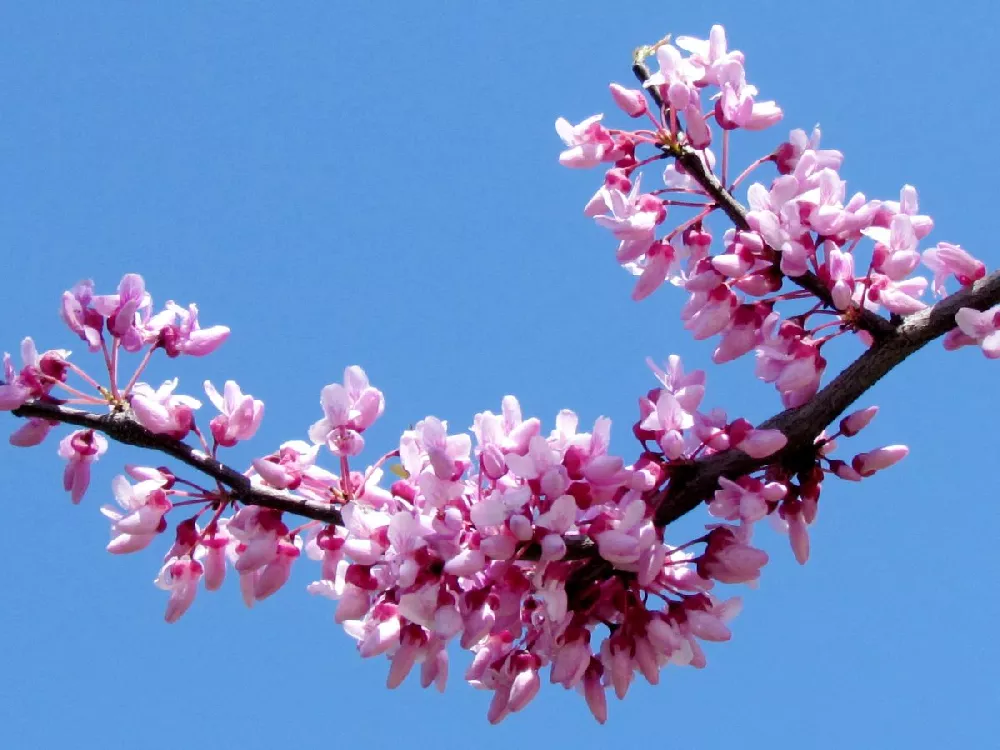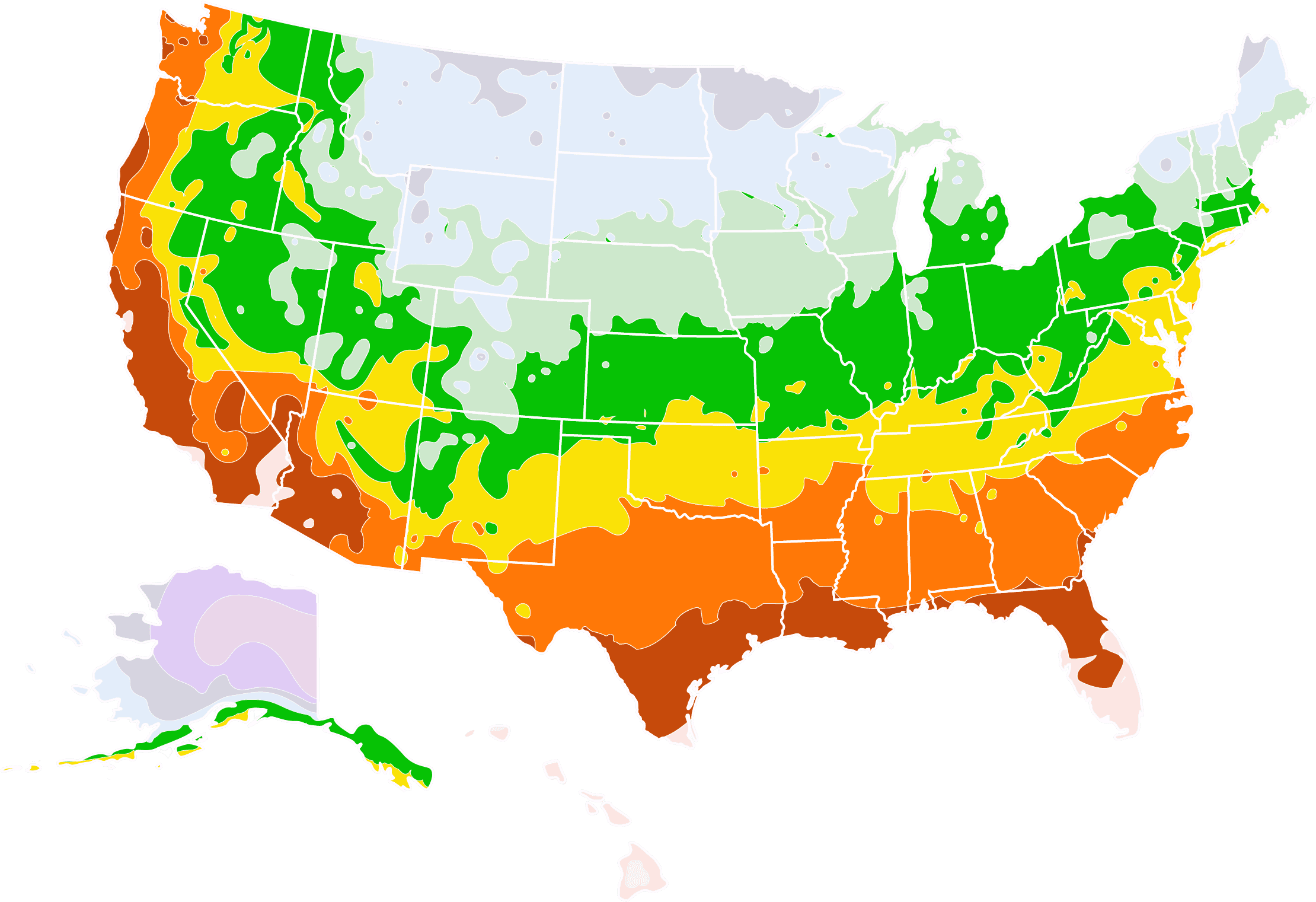- Home >
- Ornamental Trees >
- Honey Mesquite Tree
Honey Mesquite Tree for Sale - Buying & Growing Guide
A true American treasure, the Honey Mesquite Tree, Prosopis glandulosa, grows wild in the deserts of southwestern U.S. and Mexico. It can take either the form of a shrub or a moderately-sized single-trunk tree. This tough plant can handle just about any soil type, and its long tap root means it is resistant to even severe drought conditions. The tree can grow to 30 feet, and features a softly-rounded canopy with bright green twice-compound leaves. Yellow-green, fragrant racemes draw pollinators like a magnet in spring and early summer. In late summer, interest is provided by the brownish pods that result from pollination. Even in winter, when the leaves drop, the strikingly-twisted branches add a stark but beautiful silhouette to your garden. Here are a few more reasons to plant a Honey Mesquite Tree:
- These trees are both pest- and -disease resistant, and deer avoid them.
- Seed pods provide a valuable food source for wildlife and songbirds.
- Taproot can grow to 100 feet deep to access water underground.
Enter your zip code to find nearby stores that may carry this plant.
Plant Care
Sunlight

Honey Mesquite Trees thrive in full sun, requiring at least 6 hours of direct light a day.
Watering
When newly planted, water weekly; established plants need no supplemental watering.
Fertilizing

Although Mesquites manage on their own in nature, you can feed your tree with a balanced fertilizer annually.
Planting and Care
Planting instructions
Site your Honey Mesquite in well-draining soil with full sun, and away from overhead cables or wiring. It is not particular about soil type, and thrives in low-quality soil that would kill other plants. Unpot your sapling and tease out any encircling roots, which can girdle the tree and slowly kill it. Dig a hole as deep as the root ball and twice as wide. Be sure to allow room for the primary tap root, which needs to be able to grow downward. Place the sapling in the hole, and while holding it upright and steady, fill in around it with topsoil. Tamp down as you go to eliminate air pockets. Water thoroughly. Apply a 2-3 inch layer of an organic mulch such as bark chips around the root zone to conserve moisture and hinder weeds.
Watering and nutrients
For your tree’s first year, water it thoroughly once a week. If the leaves start to turn yellow, cut back on watering. Once your tree is established and growing well, it won’t need supplemental watering. Mesquites are desert plants, and can handle even severe droughts fairly well. Although supplemental fertilizer isn’t necessary, if you wish for stronger growth you can feed it with a balanced, slow-release product such as a 10-10-10 formula in the spring.
Pollination
Honey Mesquite Trees are self-fertile, so a single tree has both male and female reproductive parts on it. The fragrant flowers, which occur on spikey racemes, are beloved by honey bees, and mesquite honey is highly prized by many. Fertilized flowers yield bean-like pods in the late summer. In the wild, these are ingested by a range of animals who aid in spreading the species widely.
Pruning
When your tree is young, cut it annually to shape it to the form you’d like it to take. If left unpruned, it may form a multi-trunk shrub. To prune your Honey Mesquite into a tree form, remove all secondary trunks and suckers that appear at the base of the plant. As it grows, you can trim lower branches as well to make it easier to mow underneath. Also be sure to prune out any dead, diseased, or damaged limbs whenever you see them.
Pests and diseases
Mesquite Trees are resistant to most insect pests. Occasionally, they will be bothered by mealybugs, or several varieties of scale insects. A healthy tree can fend off minor infestations. Keep the base of the tree free from leaf litter and debris to avoid giving insects a place to hide. The only disease Mesquites are prone to is stem gall rust, a fungal disease, which may form a canker on branches. Prune out infected branches immediately.
Achieving maximum results
If you’re looking for a t sturdy plant that can handle a tough site, Honey Mesquite might be the right fit. Honey Mesquite Trees have been found thriving in sites as challenging as Death Valley, for example. They are used to desert-like conditions and can even handle salty soil. They also grow well at elevations of up to 1,800 meters. The key to growing Honey Mesquite successfully is giving it some extra care when young. Nurture it well, and it will be carefree as a mature tree. This means watering regularly until that deep tap root can grow enough to access underground water, and pruning carefully to shape the tree while it’s still small.
FAQs
Where is Honey Mesquite able to grow outdoors?
Honey Mesquite is hardy in U.S. Department of Agriculture hardiness zones 7-9. Native to the southwestern U.S., it's a great tree to consider if you have poor soil or desert-like conditions to manage in your landscape. States where it thrives include Texas, Nevada, Arizona, and Oklahoma.
What's the best way to use Honey Mesquite in my landscape?
Honey Mesquite Trees are a great addition to rock gardens or xeriscaped settings. If you are trying to naturalize scrubland or tall grass conditions on your property, it would do well there. It is also a good choice for a front yard, or anywhere you'd like dappled shade under which to grow smaller shade-loving perennials or annuals.
Does Honey Mesquite have thorns?
Yes, it does. These are particularly prominent on young trees; they are not as prolific on mature trees. The thorns are roughly 2 inches long and sharp, and it pays to wear a pair of thick gloves and long sleeves when working with young trees.
Compare Similar Products
You can't add more Product Name - Product size to the cart.
OK








